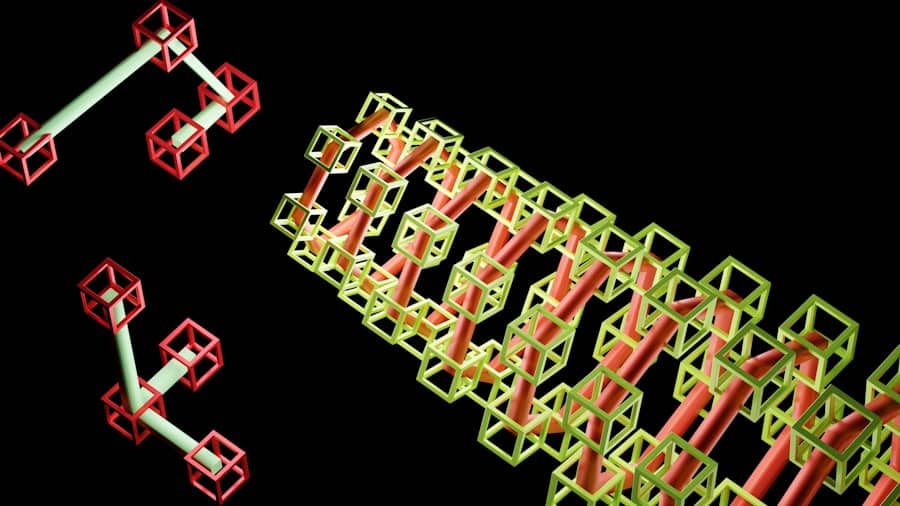Carbon credit trading has emerged as a pivotal mechanism in the global effort to combat climate change. At its core, carbon credit trading allows companies and countries to buy and sell credits that represent the right to emit a certain amount of carbon dioxide or other greenhouse gases. Each credit typically corresponds to one metric ton of carbon dioxide emissions.
This system is designed to create a financial incentive for reducing emissions, as entities that can lower their emissions below their allocated cap can sell their excess credits to those who exceed theirs. The concept is rooted in the belief that market forces can drive innovation and efficiency in reducing greenhouse gas emissions. The origins of carbon credit trading can be traced back to the Kyoto Protocol, an international treaty adopted in 1997 that aimed to reduce greenhouse gas emissions globally.
The protocol established mechanisms such as the Clean Development Mechanism (CDM) and Joint Implementation (JI), which allowed for the creation and trading of carbon credits. Over the years, various cap-and-trade systems have been implemented worldwide, including the European Union Emissions Trading System (EU ETS) and California’s Cap-and-Trade Program.
Key Takeaways
- Carbon credit trading is a market-based mechanism for reducing greenhouse gas emissions by allowing companies to buy and sell credits that represent the right to emit a certain amount of carbon dioxide.
- AI plays a crucial role in carbon credit trading by analyzing large amounts of data to identify patterns and make predictions, helping companies make informed decisions.
- Blockchain technology ensures transparency and security in carbon credit trading by creating an immutable and decentralized ledger of transactions, reducing the risk of fraud and manipulation.
- The combination of AI and blockchain technology ensures transparency in carbon credit trading by providing real-time monitoring and verification of emissions data, reducing the risk of double counting and fraud.
- The benefits of AI and blockchain in carbon credit trading include increased efficiency, reduced transaction costs, and improved trust and credibility in the market, leading to greater participation and investment in sustainable projects.
The Role of AI in Carbon Credit Trading
Artificial Intelligence (AI) is increasingly becoming a transformative force in carbon credit trading, enhancing the efficiency and accuracy of various processes involved in the market. One of the primary applications of AI in this domain is predictive analytics, which leverages vast amounts of data to forecast emissions trends and market movements. By analyzing historical data, weather patterns, and economic indicators, AI algorithms can provide insights into future carbon credit prices, helping traders make informed decisions.
This predictive capability is particularly valuable in a market characterized by volatility and uncertainty. Moreover, AI can streamline the verification process for carbon credits. Traditionally, verifying the authenticity of carbon credits has been a labor-intensive task, often requiring extensive documentation and on-site inspections.
AI-powered tools can automate much of this process by analyzing satellite imagery, sensor data, and other digital inputs to assess whether projects claiming carbon credits are genuinely reducing emissions. For instance, machine learning models can analyze land use changes over time to verify reforestation projects or monitor industrial emissions through real-time data collection. This not only speeds up the verification process but also enhances trust in the integrity of carbon credits.
The Role of Blockchain in Carbon Credit Trading
Blockchain technology offers a decentralized and immutable ledger that can revolutionize carbon credit trading by enhancing transparency and traceability. Each transaction involving carbon credits can be recorded on a blockchain, creating a permanent record that is accessible to all stakeholders. This transparency is crucial in a market where trust is paramount; buyers need assurance that the credits they purchase are legitimate and not double-counted or fraudulent.
By utilizing blockchain, every credit can be traced back to its origin, providing a clear audit trail that verifies its authenticity. Additionally, blockchain facilitates the creation of smart contracts—self-executing contracts with the terms of the agreement directly written into code. In carbon credit trading, smart contracts can automate transactions based on predefined conditions, such as the completion of a verified emission reduction project.
This automation reduces administrative overhead and minimizes the potential for disputes between buyers and sellers. For example, if a renewable energy project generates a certain amount of verified emissions reductions, a smart contract could automatically issue the corresponding carbon credits to the project developer without requiring manual intervention.
How AI and Blockchain Ensure Transparency in Carbon Credit Trading
The combination of AI and blockchain creates a robust framework for ensuring transparency in carbon credit trading. AI enhances data analysis capabilities, allowing for real-time monitoring of emissions and project performance. When integrated with blockchain, this data can be securely recorded and made accessible to all participants in the trading ecosystem.
For instance, if an organization implements a new technology to reduce emissions, AI can track its effectiveness over time while blockchain ensures that this information is transparently shared with potential buyers of carbon credits. Furthermore, blockchain’s decentralized nature means that no single entity has control over the data, reducing the risk of manipulation or fraud. Each transaction is verified by multiple nodes within the network before being added to the blockchain, creating a consensus that bolsters trust among participants.
This level of transparency is particularly important in an industry where skepticism about the validity of carbon credits has been prevalent. By providing verifiable proof of emission reductions and project legitimacy, AI and blockchain together foster a more trustworthy trading environment.
Benefits of AI and Blockchain in Carbon Credit Trading
The integration of AI and blockchain into carbon credit trading offers numerous benefits that extend beyond mere efficiency improvements. One significant advantage is enhanced market accessibility. By lowering barriers to entry through automated processes and transparent transactions, smaller companies and projects can participate more easily in carbon markets.
This democratization of access encourages innovation and diversification within the market, leading to a broader range of emission reduction projects. Additionally, AI-driven analytics can help identify new opportunities for emission reductions that may have previously gone unnoticed. For example, machine learning algorithms can analyze patterns in energy consumption across various sectors to pinpoint inefficiencies that could be addressed through targeted interventions.
This proactive approach not only contributes to achieving emission reduction targets but also creates economic opportunities for businesses willing to invest in sustainable practices.
Challenges and Limitations of AI and Blockchain in Carbon Credit Trading
Standardization: A Prerequisite for Success
The carbon credit market is fragmented, with various regulatory frameworks and methodologies governing how credits are created and traded. This lack of standardization across different platforms and jurisdictions creates complexity when integrating AI and blockchain solutions, leading to potential inconsistencies.
Data Privacy and Security Concerns
The use of AI and blockchain technologies raises concerns about data privacy and security. While blockchain provides transparency, it also raises questions about how sensitive data related to emissions reductions is handled. Striking a balance between transparency and confidentiality is crucial to ensure that proprietary information is protected while still allowing for verification by relevant stakeholders.
Overcoming the Challenges
To fully leverage the potential of AI and blockchain in carbon credit trading, it is essential to address these challenges. By developing standardized protocols for data sharing and verification processes, and ensuring the secure and confidential handling of sensitive data, the benefits of these technologies can be realized.
Case Studies of Successful Implementation of AI and Blockchain in Carbon Credit Trading
Several organizations have begun to explore the synergies between AI, blockchain, and carbon credit trading with promising results. One notable example is Everledger, a company that uses blockchain technology to create a digital registry for carbon credits linked to specific projects. By leveraging AI algorithms to analyze project performance data, Everledger ensures that each credit issued corresponds to verified emission reductions.
This approach has garnered interest from both corporate buyers seeking reliable credits and project developers looking for transparent ways to monetize their efforts. Another case study involves Power Ledger, an Australian company that utilizes blockchain technology to facilitate peer-to-peer energy trading while incorporating carbon credits into its platform. By enabling individuals with renewable energy sources to sell excess energy—and associated carbon credits—directly to consumers or businesses, Power Ledger creates a decentralized marketplace that empowers users while promoting sustainability.
The integration of AI helps optimize energy distribution based on real-time demand patterns, further enhancing efficiency within this innovative trading model.
The Future of Carbon Credit Trading with AI and Blockchain
Looking ahead, the future of carbon credit trading appears increasingly intertwined with advancements in AI and blockchain technologies. As regulatory frameworks evolve to accommodate these innovations, we may witness a shift toward more dynamic and responsive trading environments where real-time data drives decision-making processes. The potential for automated trading based on AI predictions could lead to more efficient price discovery mechanisms within carbon markets.
Furthermore, as awareness of climate change continues to grow globally, there will likely be an increased demand for credible carbon credits from both corporations aiming to meet sustainability goals and individuals seeking environmentally responsible investment opportunities. The combination of AI’s analytical capabilities with blockchain’s transparency could create a more robust marketplace that fosters trust among participants while driving significant reductions in greenhouse gas emissions. In conclusion, as we navigate the complexities of climate change mitigation through mechanisms like carbon credit trading, embracing technological advancements such as AI and blockchain will be essential for creating effective solutions that promote sustainability while ensuring market integrity.
A related article to “How AI and Blockchain Are Enabling Transparent Carbon Credit Trading” can be found on The Next Web, which brings insights to the world of technology. This article may provide further information on the technological advancements and innovations in the field of AI and blockchain that are revolutionizing carbon credit trading. To read more about the latest trends in technology, visit The Next Web.
FAQs
What is carbon credit trading?
Carbon credit trading is a system where companies can buy and sell credits that allow them to emit a certain amount of carbon dioxide and other greenhouse gases. This system is designed to help reduce overall carbon emissions by creating a financial incentive for companies to reduce their emissions.
How does AI enable transparent carbon credit trading?
AI can enable transparent carbon credit trading by providing accurate and real-time data on carbon emissions. AI can analyze large amounts of data from various sources to verify emissions reductions and ensure that carbon credits are being traded accurately.
How does blockchain enable transparent carbon credit trading?
Blockchain technology can enable transparent carbon credit trading by creating a secure and tamper-proof record of all transactions. This can help prevent fraud and ensure that carbon credits are being traded and used as intended.
What are the benefits of using AI and blockchain for carbon credit trading?
Using AI and blockchain for carbon credit trading can increase transparency, reduce the risk of fraud, and provide more accurate and reliable data on emissions reductions. This can help to build trust in the carbon credit market and encourage more companies to participate in emissions reduction efforts.
Are there any challenges to using AI and blockchain for carbon credit trading?
Some challenges to using AI and blockchain for carbon credit trading include the need for reliable data sources, the potential for technical issues with AI and blockchain systems, and the need for regulatory frameworks to govern the use of these technologies in the carbon credit market.



